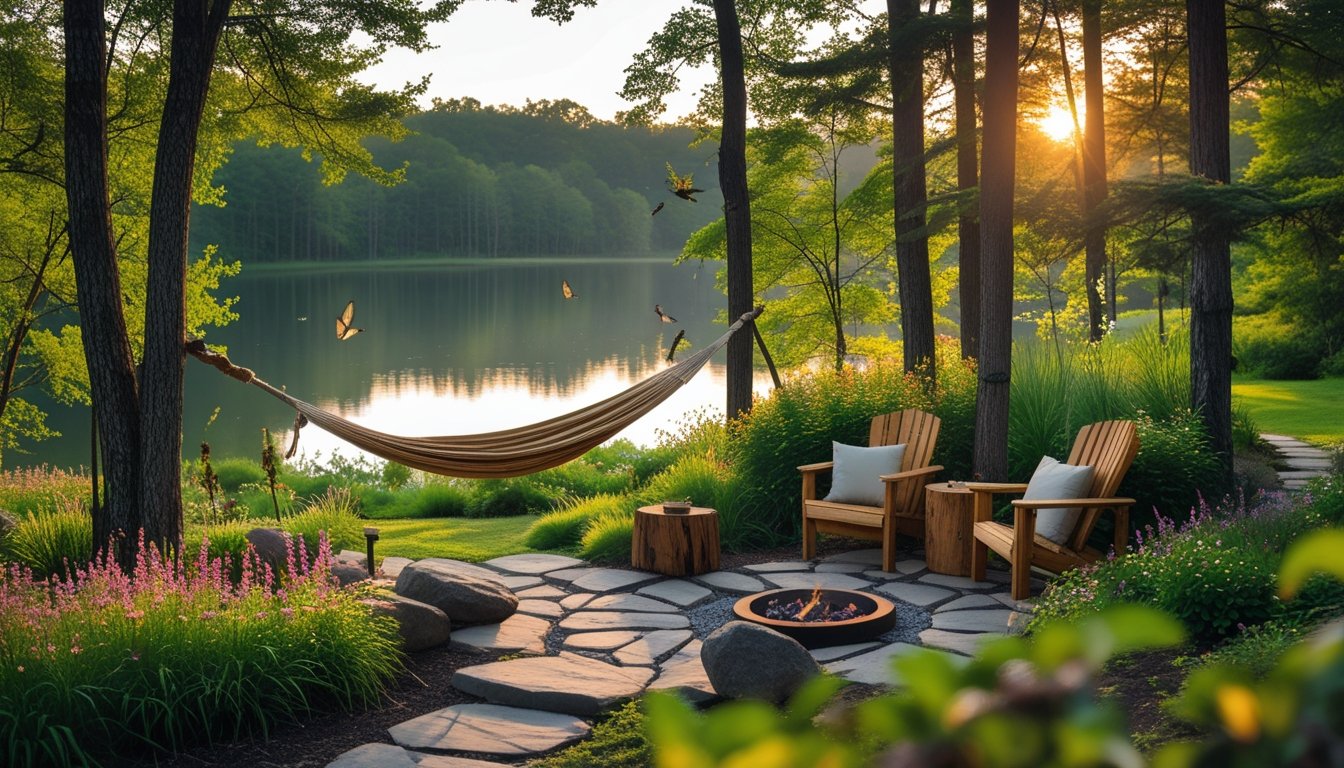Late updated: 17 Jun 2025 10:06
Written by: James Whitaker
Exploring Nature-Inspired Outdoor Relaxation Spots: Discover Tranquil Escapes
Exploring nature provides a much-needed escape from our fast-paced lives, allowing us to recharge and find peace. The world outside holds countless wonders waiting to be discovered, offering tranquillity and a sense of calm that indoor environments often lack. These spots not only soothe our minds but also promote physical well-being through activities that invite us to engage deeply with the natural surroundings.

As we venture into nature-inspired relaxation spots, we discover the calming effects of simple pleasures, such as the sound of rustling leaves or the sight of a serene landscape. These experiences remind us of the profound connection between humans and nature, urging us to slow down and observe. Everyone can find solace and rejuvenation in these retreats.
Whether it's a short walk through a peaceful path or sitting quietly in a natural sanctuary, the outdoors invites us to reflect and let go of stress. Engaging with nature provides balance, enriching our lives with moments of meditation and relaxation. Let's explore how to fully embrace the outdoors and make the most of these natural havens.
Key Takeaways
- Nature offers relaxation and physical well-being.
- Engagement with natural spots enriches our experience.
- Outdoor retreats provide moments of peace and reflection.
Discovering Nature-Inspired Outdoor Relaxation Spots
Exploring nature offers us a unique opportunity to relieve stress and improve our well-being. By engaging with outdoor activities in natural settings, we can significantly boost our mood and mental health. The subtopics that follow highlight the benefits, features, and activities that make these experiences enriching.
Benefits of Natural Settings for Relaxation
Spending time in nature provides numerous mental health benefits. Fresh air and natural beauty are excellent mood boosters and positively impact our emotional state. These settings help reduce stress levels and promote relaxation.
Being surrounded by greenery and natural landscapes enhances our connection to the environment. This connection helps foster a sense of peace and tranquillity. Ultimately, engaging with nature allows us to step away from daily stressors, leading to improved well-being.
Key Features of Nature-Inspired Spaces
Nature-inspired spaces incorporate elements from the natural world to create serene environments. These spaces often include natural materials such as wood and stone, along with abundant greenery. Fresh air is a crucial component of these settings, enhancing our overall experience.
Outdoor spaces also promote relaxation by incorporating soothing sounds like rustling leaves and bird songs. The carefully designed landscapes and soothing natural elements encourage a sense of calm. This combination makes nature-inspired spaces ideal for relaxation.
Popular Outdoor Activities for Wellbeing
Participating in outdoor activities can be an effective way to improve both physical and mental health. Activities like hiking and birdwatching allow us to engage with our surroundings. These activities provide physical exercise and help enhance mental clarity.
Another popular pursuit is mindfulness hiking, where we focus on the present moment while walking. Such activities also foster a deeper appreciation for the environment. By engaging in these activities, we can experience the positive impacts of spending time outdoors.
Ways to Engage with Nature in Outdoor Retreats

Experiencing the wonders of the natural world can be deeply fulfilling and rejuvenating. Through various activities, we can connect more closely with the environment, fostering relaxation and creativity.
Nature Walks and Hiking
Nature walks and hiking serve as excellent routes to explore biodiversity. We can encounter a myriad of plants, trees, and wildlife, enriching our understanding of natural habitats. By treading along trails during spring, the vibrant hues and scents enhance our sensory experiences.
Engaging in hikes provides an opportunity to physically challenge ourselves while deeply immersing in nature. Maps and guides can introduce us to new terrains and promote safe exploration. Whether it's casual walks or rigorous hiking, each step allows us to witness nature's splendours and witness its ever-changing landscapes.
Creative Practices: Photography and Journaling
Engaging creatively with nature sharpens our senses. With photography, we capture moments of beauty—like sunlight filtering through leaves or the delicate webbing of a morning dew-laden spider's web. These images tell stories and allow us to revisit cherished moments of outdoor exploration.
A nature journal complements this by letting us reflect through words and sketches. Documenting colours, sounds, and experiences enhances our connection and leaves us with a personal record. Both practices nurture our creativity and encourage us to focus on the intricate details of the world around us.
Mindfulness Activities: Forest Bathing and Meditation
Mindfulness can amplify our connection to nature. Forest bathing, originating in Japan as shinrin-yoku, involves immersing ourselves in a forest setting, taking in the atmosphere through all our senses. This practice has been shown to lower stress and foster tranquillity.
Meditation in the outdoors, perhaps under a sprawling tree, allows us to practise focused breathing and mindfulness. The natural environment offers a serene backdrop that enhances the meditative experience. Yoga can also accompany meditation to stretch our bodies, offering relief and grounding amid the natural wonders surrounding us. Together, these activities facilitate a profound sense of peace and rejuvenation.
Frequently Asked Questions

Exploring nature-inspired spots in Ontario offers diverse opportunities for relaxation. Identifying nearby retreats involves using specific tools and resources, while costs can vary from free access areas to locations with entrance fees. Engaging sensory activities suit both toddlers and adults, contributing unique benefits.
What are some nature-inspired relaxation spots accessible in Ontario?
Ontario boasts stunning landscapes perfect for relaxation. Algonquin Provincial Park provides serene woodland trails and sparkling lakes. Further south, the Royal Botanical Gardens offers a tranquil retreat with its lush gardens and scenic walkways.
How can I find nature-inspired relaxation spots in close proximity to my location?
To locate nearby relaxation spots, consider using mobile apps like AllTrails or websites such as Parks Canada. These tools allow users to filter according to distance and activities. Local tourism websites also provide extensive lists of hidden gems.
What are the typical costs associated with visiting nature-inspired outdoor relaxation spots?
Cost varies depending on the location. Many nature spots are public and free. Provincial parks may require a parking fee or an entrance fee, typically ranging from $5 to $20. Botanical gardens might charge a small admission fee.
Which outdoor sensory activities are recommended for toddlers?
For toddlers, nature-based play areas can enhance sensory experiences. Activities like building with sand, splashing in shallow streams, or exploring natural play spaces with logs and rocks are recommended. These activities promote creativity and physical development.
How do nature-based activities benefit adults?
For adults, spending time in nature reduces stress and boosts mental well-being. Outdoor activities such as hiking, meditation in nature, or even just taking a leisurely walk can improve mood and enhance creativity. Nature provides a refreshing break from everyday pressures.
What items are essential to create a nature sensory bin?
A nature sensory bin can be crafted with simple elements such as pinecones, acorns, leaves, and small sticks. Adding sand or soil along with natural items like stones or shells enhances tactile experiences and encourages exploration. It's an engaging way to bring the outdoors inside.
